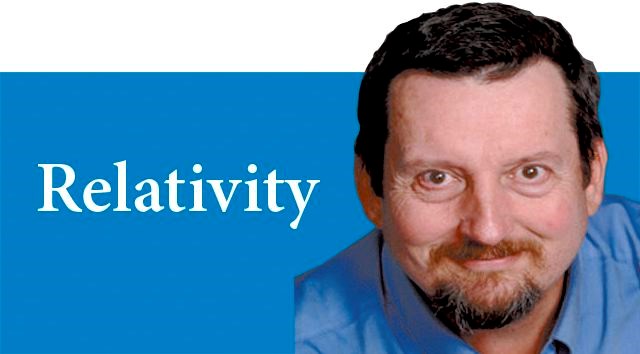"What we observe is not nature but nature exposed to our method of questioning."
- Werner Heisenberg
Werner Heisenberg was a German physicist and one of the fathers of modern quantum mechanics. It was his famous uncertainty principle that unraveled the clockwork predictability of the universe. The basic underpinning of quantum mechanics is the idea of probabilities at the atomic and even multi-atomic scale.
Unfortunately, the idea of uncertainty in the sub-structure of matter has led to questions about whether anything is truly known. And that all ways of knowing are equivalent.
But Heisenberg wasn't wrong in his statement. Indeed, to a large degree, the evolution of science and technology to its modern synthesis has relied heavily on the abilities of instrument makers and experimentalists.
Consider astronomy.
Our ancestors in all cultures looked to the night sky and wondered about the points of light before them. The nightly pageant inspired many cultures to describe figures in the sky and create stories about the constellations of stars above. The reappearance of the sun each morning was accompanied by its own myths.
It wasn't until various people started to mark star positions, the point on the horizon where the sun rises and sets each day, where the moon rises and sets, and what the wandering stars were doing that astronomy began to take hold.
But despite having a map of the sky, there were still a great many questions. What are the stars made of? Why are some brighter than others or different colours? Why are the paths followed by the wanderers so different from every other star?
With the invention of the telescope, scientists began the long road to being able to answer some of these questions. Galileo was able to observe the surface of Jupiter and see the Great Red Spot. He observed the rings around Saturn. He detected the phases of Venus and Mercury.
He was also able to discern the four major moons and from these observations became convinced the Earth traveled around the Sun. After all, if moons can orbit the massive Jupiter then planets can surely orbit the massive Sun.
He was also able to use the four moons to calculate the distance to the planets and the speed of light. Because his method of questioning was so much more sophisticated than naked eye observation, he was able to expose so much more of the natural world.
Of course, his work wasn't the end of everything. Calculating planetary orbits helped Newton develop his law of gravity. The discovery of gravity as the force binding the world and solar system together added a level of predictability to the cosmos.
The discovery of the wave-like properties of light also allowed Newton to unravel the rainbow. Hans Fraunhofer used this visible spectrum from sunlight to demonstrate the presence of earthly atoms in the Sun.
Indeed, helium was discovered from starlight long before it was detected on Earth.
Spectroscopy opened up a whole vista and exposed even more of the natural world.
Instruments to detect the heat content of light allowed us to uncover the infrared region of the electromagnetic spectrum.
Waves of light not visible to the naked eye, but readily apparent to a thermometer, expanded our capacity to observe the world.
It led to the further realization there are a great many wavelengths over which energy is transmitted. Maxwell's equations laid bare the entirety of the electromagnetic spectrum and led to the development of radios. Detecting radio waves from space has resulted in an entire sub-discipline - radio-astronomy.
Being able to observe the universe across the entire spectrum allowed astronomers to expose even more of nature. Increasing the size and capability of telescopes eventually led to the discovery of other galaxies.
Billions and billions of other galaxies with billions and billions of stars.
With the launch of the Hubble telescope, even more of the universe became accessible. Nature was laid bare before us. And other orbiting observatories have let us discover planets around distant stars. It is a fair certainty we are not alone in the universe.
At the same time as observations made on Earth exposed more of nature to our questions, scientists have begun to visit the planets and other bodies in the solar system. This past week another probe was successfully landed on Mars. The collection of data being obtained about the planet is painting a very different picture.
We now know Mars once had free flowing water, there is still liquid water to be found on the planet, and it is a barren landscape which might have once featured primitive life. The nature of the planet is slowly yielding to our persistent method of questioning and much is being revealed.
Science is an ongoing process. The more we know, the better our questions and the more we learn.



